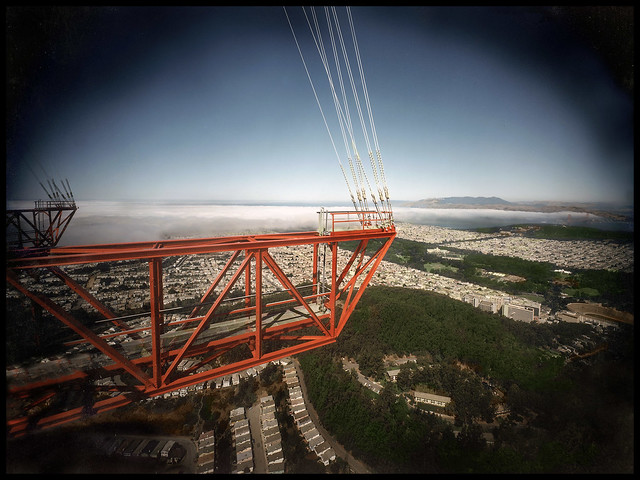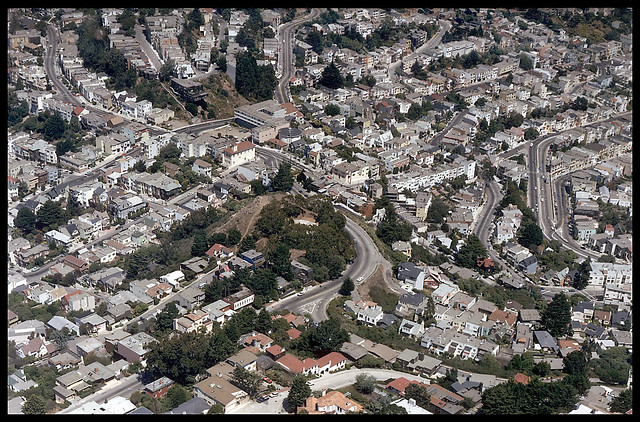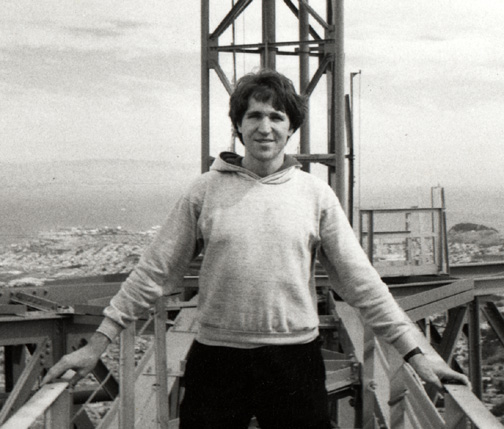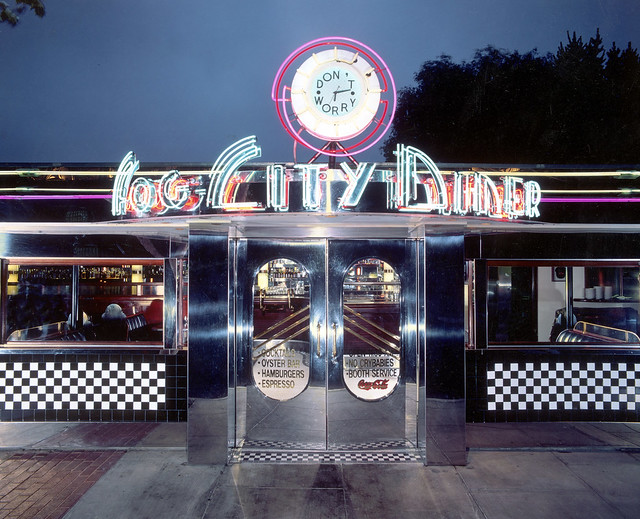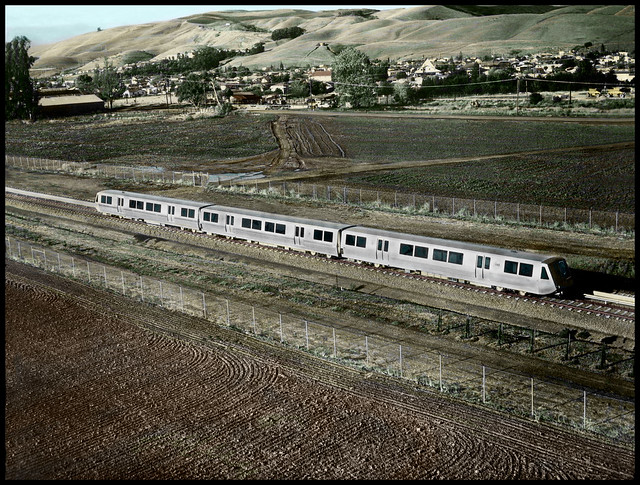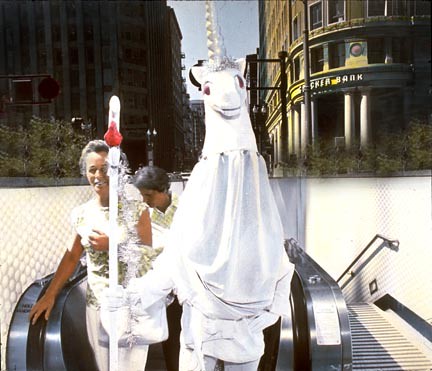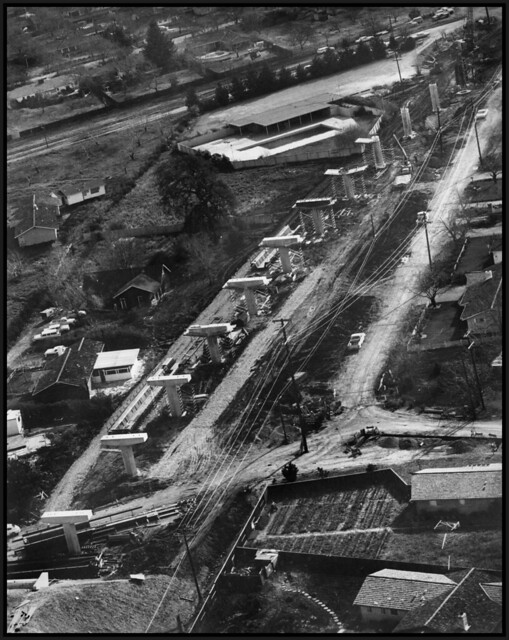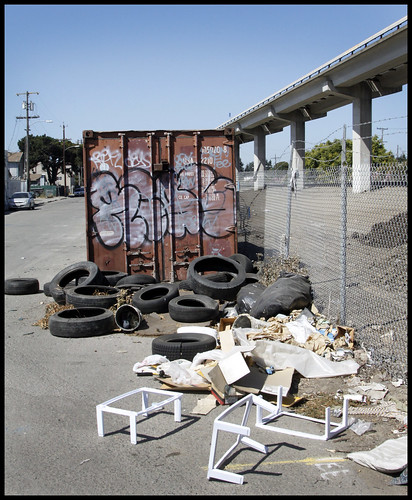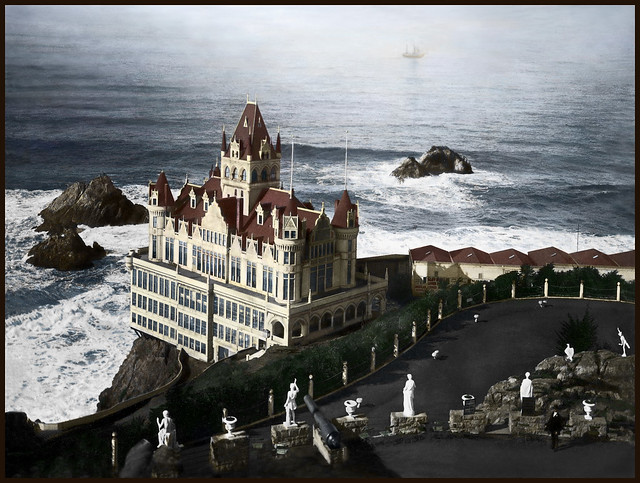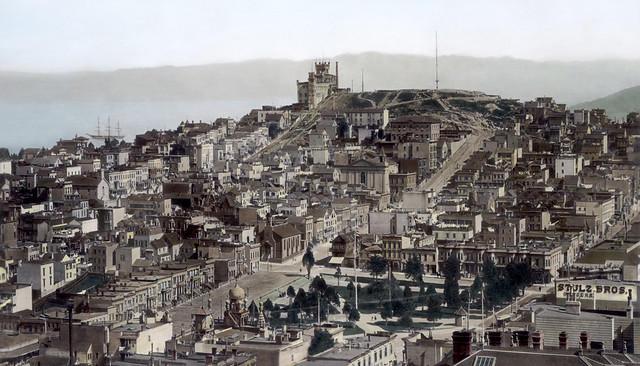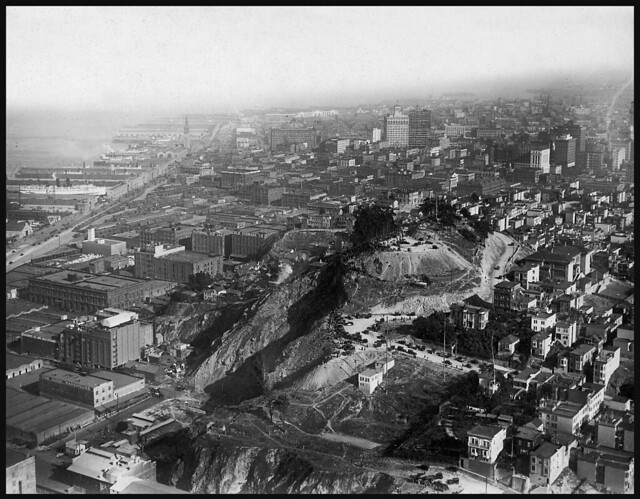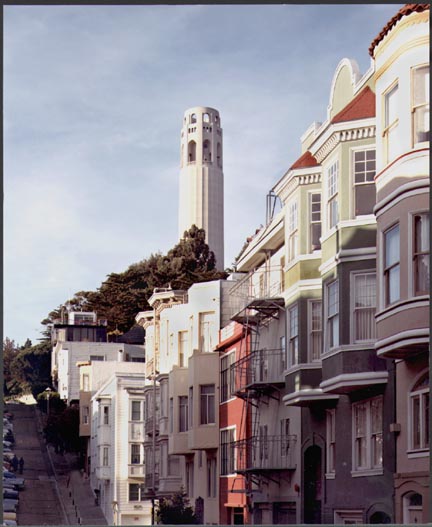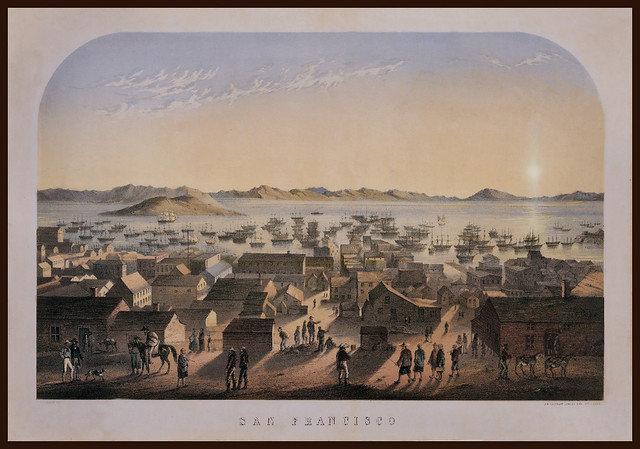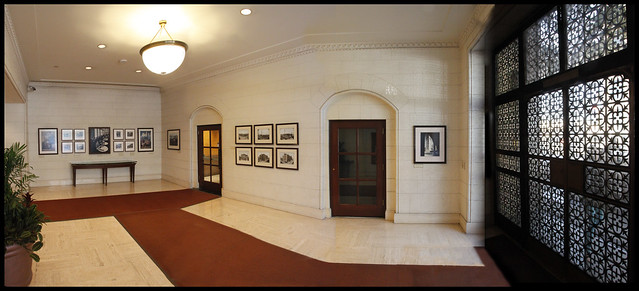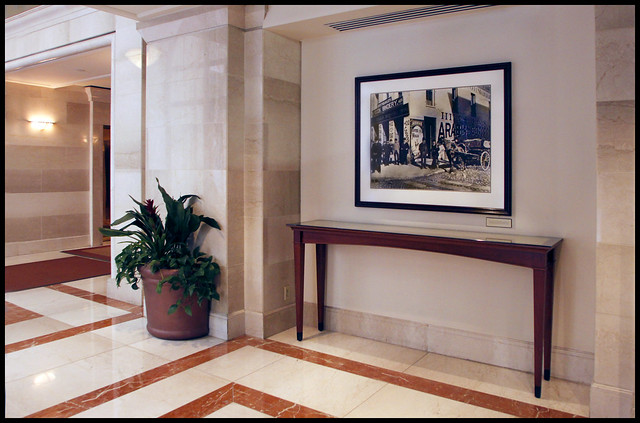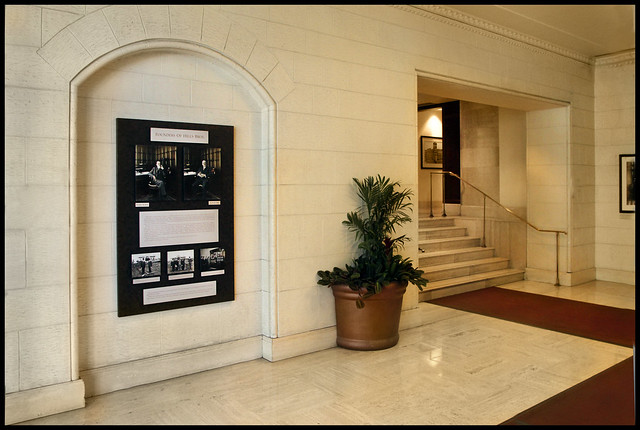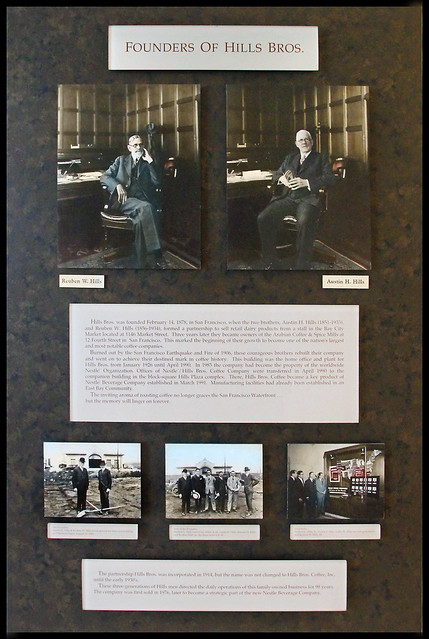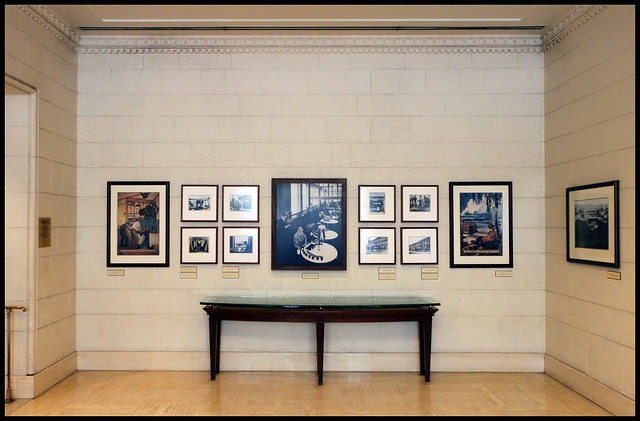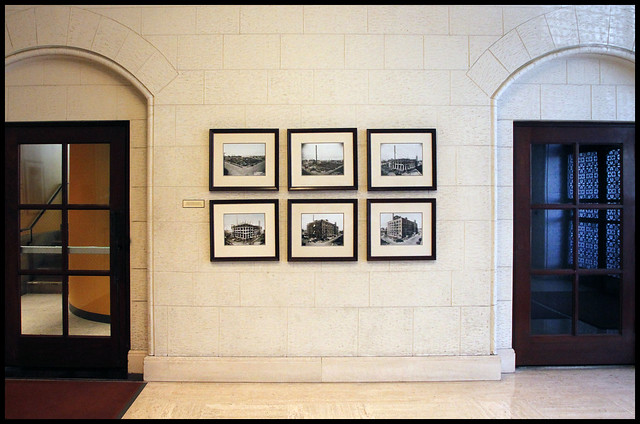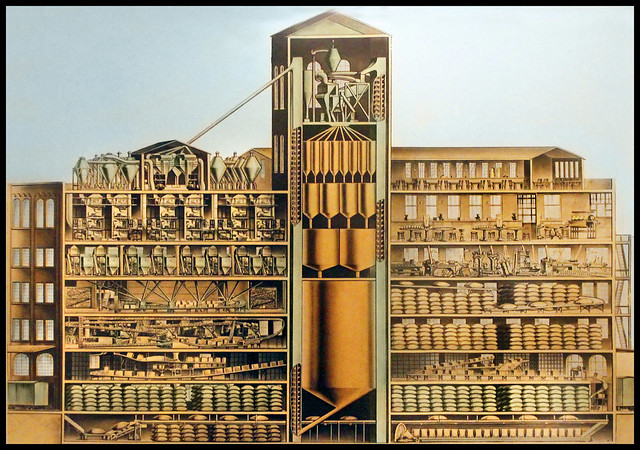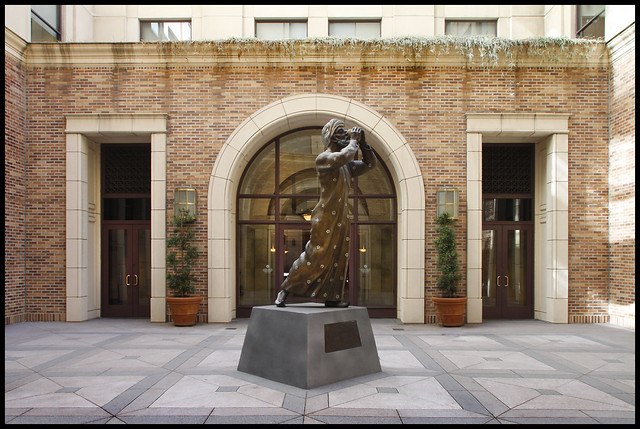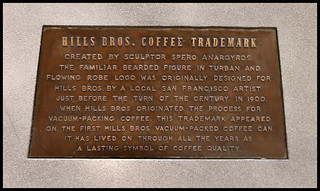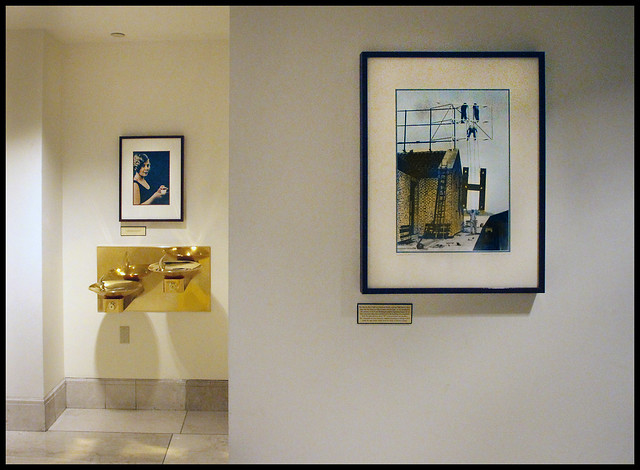Something with a little vertigo anyone?
Rust-colored Alien-like "Prongs" extend from the
Tower to create the perfect vantage point
______________________________________________________________________________Imagine the grinding of metal gears, scrapping of metal on metal siding, snapping and popping as they engaged thankfully, one by one, thus enabling a painfully slow but necessary ascent inside one of the three metal legs of Sutro Tower. Looking out mid-climb from the man cage, an emerging vanishing point fortold the vertigo enducing future that was a mere 15 minutes away as the elevator slowly took us toward the non-aviation related highest perch in San Francisco.
Not content for the simple experience however, we had decided to lug of all things an 8 x 10" view camera , one of those Ansel Adams size monster cameras that would capture images that could be blowup the size of a house. What were we thinking? Oh yes, it was 1984 and we did things like this back in the day.
Once we summitted, there was suffice to say some further adjusting to do. First and foremost, as you step off the man cage, you realize that your walking platform is see-through expansion metal-grating. This means, if you chose to look at your feet, you are also staring straight through your new 'floor' roughly 750 feet to the cement deck below. This is a bit unnerving. You get used to it. Thank god for the hand rails.
Upper Castro area from top of Sutro Tower
Next up, because I simply must get the best possible shot and view, that bloody giant camera had to be the hoisted up and out onto the most outer perch of the prongs of this alien-like antenna tower. Yes, that means ropes and more vertigo and realizing that in addition to the visuals, that this entire contraption swayed in the wind. Only common sense and knowing that it was still standing after all these years made it possible to ignore the fear that otherwise would have quashed our sense of adventure.
Your truly back in the day
Now we were at our finale. Rest assured that the view is worth it - and, there was something supremely surreal and extraordinarily exhilarating about dangling our feet off the edge of this perch and contemplating the City and Bay Area expanding in 360 degrees in all direction. This was indeed a grand place to live and the ultimate view point. By the end of the day, the wind gradually moved from gentle to hurricane force. Same time, we started to feel our genetic material being altered by the distinct buzz of the radio waves. In an abundance of caution, we realized it was time to retreat, and enjoy another fifteen minute long man-cage decent back to the normal terra firma of the City...
Available: http://worldwidearchive.imagekind.com/SanFrancisco-Contemporary
____________________________________________________________
http://www.sutrotower.com/
History: from Wikipedia
Named after Adolph Sutro, a businessman and former mayor of San Francisco who had a mansion located about 100 feet away from where the tower is now located, the tower stands 977 feet (298 metres) above the ground and 1,800 ft (549 m) above sea level. It is the tallest structure in the city, surpassing the 853 ft (260 m) Transamerica Pyramid by more than 100 ft (30 m). In addition, it is built on one of the highest peaks in the city, the old site of the Sutro Mansion owned by Adolph Sutro's descendants.
The facility is easily accessible by car and the site offers beautiful panoramic viewpoints of San Francisco, and there is a platform near the top of the tower, 762 ft (232 m) above ground. Authorized maintenance workers access the tower by a small two-person elevator that runs inside the west tower enclosed leg.
